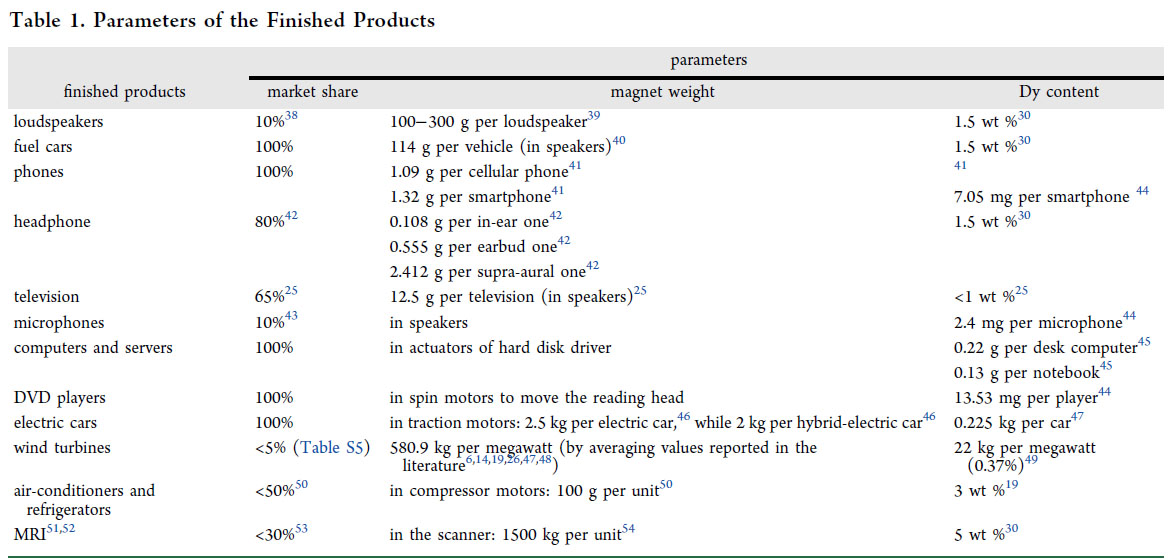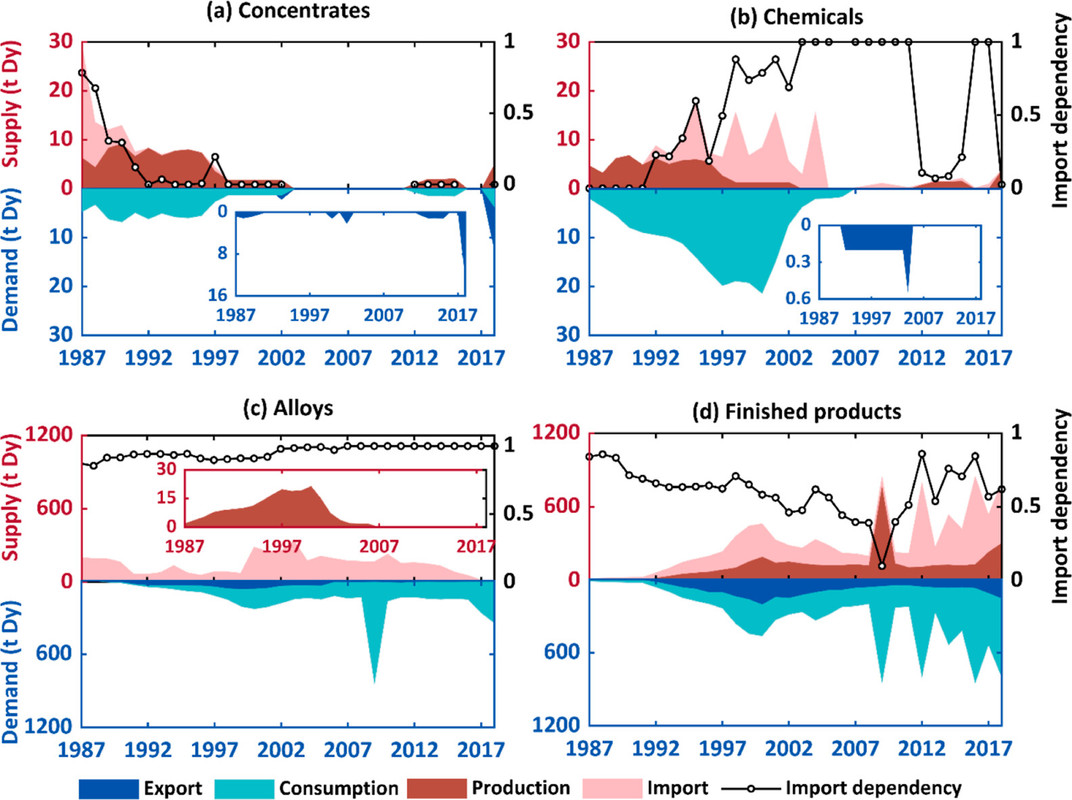Science
Related: About this forumMaterial Flow Analysis of Dysprosium in the United States
The paper to which I'll refer in this post is this one: Material Flow Analysis of Dysprosium in the United States, Chuke Chen, Nan Li, Jianchuan Qi, Jianlimin Wei, and Wei-Qiang Chen Environmental Science & Technology 2023 57 (45), 17256-17265.
The paper is relevant to the widespread belief, which I do not share, that so called "renewable energy" is in fact sustainable, where "sustainable" would refer to centuries and/or ideally, millennia.
This paper refers to the US; earlier on I discussed this element in connection with China:
Unlocking Dysprosium Constraints for China's 1.5 C Climate Target
I'll just share some text from the current paper under discussion, along with a few telling graphics.
From the introductory text:
Exploring Dy flows between products and across countries is essential to devise strategic plans. Some researchers attempted to identify and quantify the major factors that contribute to the US Dy availability and supply risks, (11–13) such as the depletion time of domestic reserves, country concentration, and governance, and they primarily focus on Dy ore supply. Several other studies evaluated Dy demands for finished products under specific scenarios, such as for wind turbines driven by the Wind Vision Project (14) and Blue Map (15), and electric vehicles by automotive electrification, (16,17) which informed the decision-makers of potential material-related issues in particular initiatives. (18–23) Furthermore, several studies were conducted to identify particular sources of certain products (e.g., domestic extraction of ores, (24) cross-border trade of alloys (8,20,25), and finished products (23,26)). Owing to scarce data, element-specific material flow analysis (MFA) of rare-earth elements in the US has not been conducted, and information on domestic demands for Dy-bearing chemicals and alloys is unavailable. Element-specific information is crucial for making decisions on capacity planning (business level), industrial development (industry level), and national strategy formulation (country level). One such example is the volume of national strategic stockpiles (mostly composed of chemicals) determined according to the demands of manufacturing industries. So far, the information about Dy flows is still incomplete.
Thus, to bridge the knowledge gap related to the US Dy, we performed a dynamic MFA covering the period from 1987 to 2018. The MFA has been used as an effective tool to explore material flows into, out of, and within a certain system by analyzing material production, consumption, and international trade from a lifecycle perspective. (27,28) Notably, in this study, we explored the comprehensive coverage of products, processes, and periods. First, the MFA framework adopted in our study considers all types of Dy-bearing products available in the US market including ores, concentrates, chemicals, alloys, and finished products. Second, it distinguishes the US from the rest of the world, allowing for comparative analyses of domestic and overseas supply and demand. Third, it explores the scenario starting from 1987, when the first Dy chemicals were produced by factories in the US. The results reveal the temporal evolutions of the whole Dy supply chain as well as the causes and consequences and provide quantitative information on the Dy flows in the US. Based on these results, the progress of actions and policies, as well as near-term implications, are discussed...
A nice table in the paper gives insight to the amount of dysprosium found in various consumer items:

Some telling graphics:

The caption:

The caption:

The caption:
The authors conclude that major dysprosium (lanthanide) ore finds have been discovered in the United States, and potentially these might supply the United States for about 30 years.
Thirty years is not, of course, centuries and certainly not millennia however. I will be dead myself in 30 years, probably well before 30 years, but this does not eliminate my concern for those who come after me.
For the record, the heavy lanthanides, those beyond gadolinium in the periodic table, are not fission products that can be obtained from used nuclear fuel as the light lanthanides, lanthanum through europium, can. In any case, the high energy to mass ratio that defines why nuclear power is the most sustainable form of energy before humanity, means that even for those lanthanides found in considerable portions, in particular lanthanum and neodymium, will not be sufficient to maintain demand.
I trust you are enjoying the Thanksgiving holidays.
sprinkleeninow
(20,546 posts)my furchild. Was uneventful except for the fact that we completely ran out of gadolinium.
Be sweet now, ya hear!
🫡
jpak
(41,780 posts)Try again
Lol